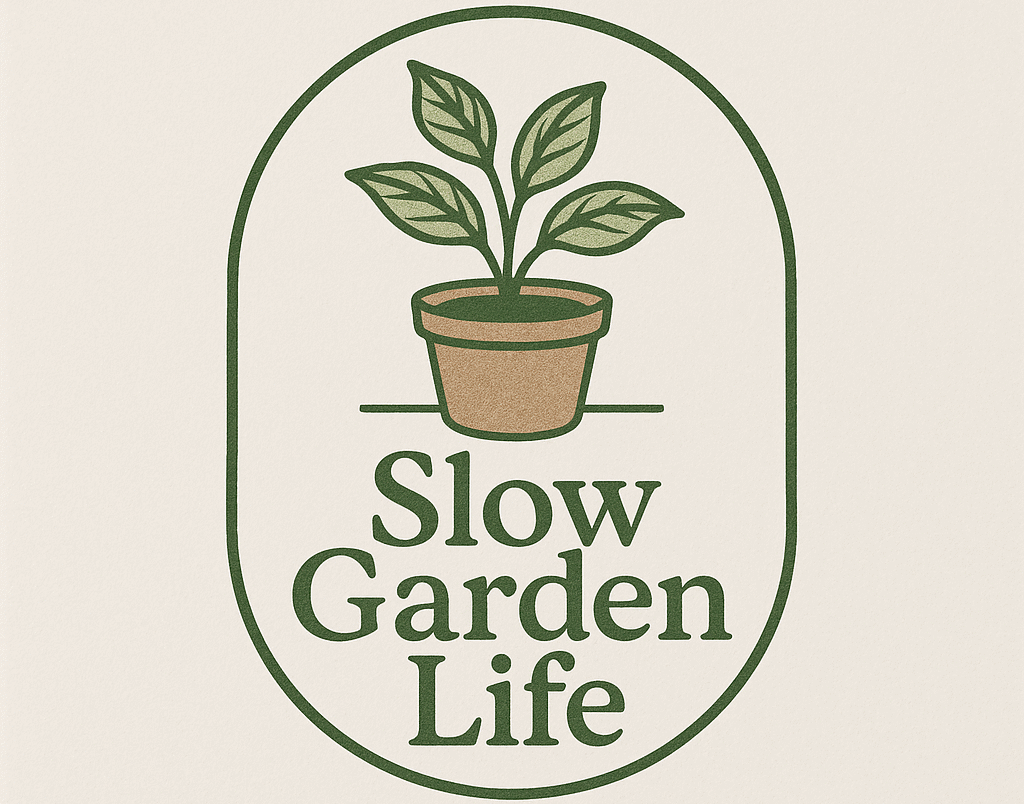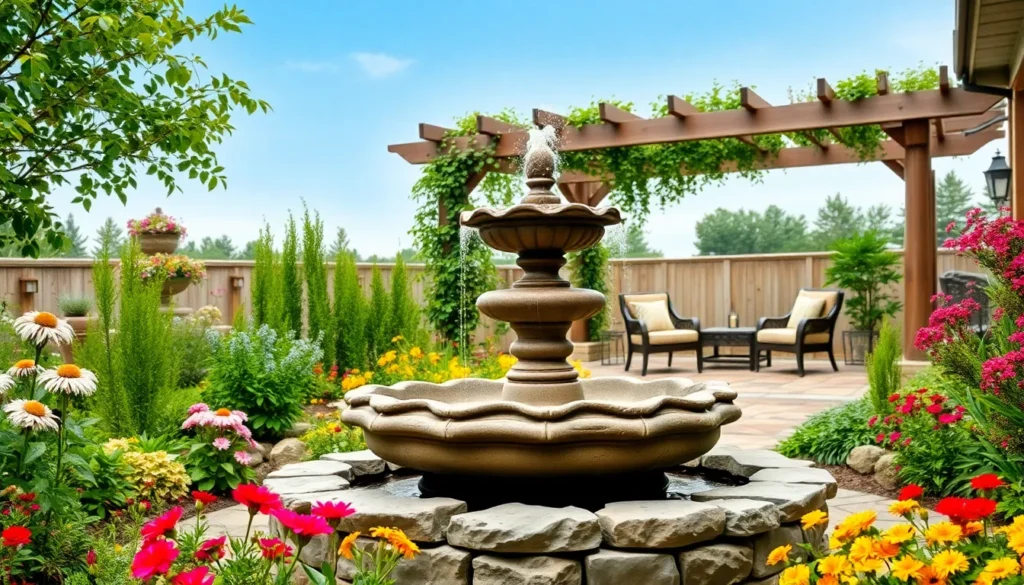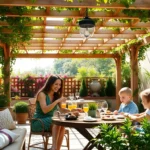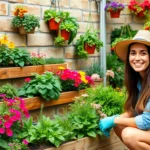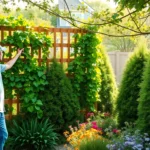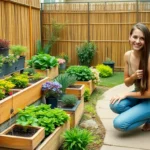We’ve all walked into a garden that made us stop and stare. There’s something magnetic about outdoor spaces that draw your eye to a stunning centerpiece – whether it’s a graceful fountain bubbling in the corner or a vibrant sculpture nestled among the greenery.
Creating the perfect garden focal point transforms your outdoor space from ordinary to extraordinary. It’s that one element that gives your industry personality and becomes the conversation starter when guests visit. The best part? You don’t need a massive budget or professional landscaping experience to achieve this impact.
From dramatic water features and artistic sculptures to strategic plantings and architectural elements we’ll explore dozens of creative ideas that’ll make your garden the envy of the neighborhood. These focal points aren’t just pretty additions – they’re design anchors that tie your entire industry together and create visual interest year-round.
Create a Stunning Water Feature Centerpiece
Water features transform any garden space into a tranquil retreat while commanding attention as the perfect centerpiece. These installations bring movement, sound, and visual interest that captivates visitors year-round.
Install a Classic Garden Fountain
Traditional tiered fountains create an elegant focal point that works beautifully in both formal and cottage-style gardens. We recommend positioning your fountain at the intersection of garden paths or as the central element in a circular planting bed. Stone, cast iron, and ceramic materials offer durability while complementing various architectural styles.
Solar-powered fountain options eliminate the need for electrical wiring and reduce ongoing costs. These eco-friendly alternatives work particularly well in sunny locations and can operate for 6-8 hours daily during peak seasons. Consider models with battery backup systems to maintain operation during cloudy periods.
Maintenance requirements include regular cleaning of pumps and water reservoirs every 2-3 weeks during active seasons. We suggest adding beneficial bacteria treatments monthly to prevent algae buildup and maintain crystal-clear water. Winter preparation involves draining systems in freezing climates to prevent damage.
Design a Modern Reflecting Pool
Rectangular reflecting pools create sleek, contemporary focal points that mirror surrounding plantings and sky. We recommend dimensions of 4×8 feet or larger to achieve proper reflection effects. Black or dark gray liner materials enhance the mirror-like quality while minimizing maintenance visibility.
Integrated lighting systems transform reflecting pools into dramatic evening features. LED strip lights placed along the perimeter or underwater create stunning illumination effects. Smart lighting controls allow us to adjust colors and intensity to match different moods or seasons.
Surrounding industry design should emphasize clean lines and architectural plants like ornamental grasses, hostas, or sculptural evergreens. We suggest keeping plantings low around the pool’s edges to maximize reflection views. Decorative stones or concrete pavers provide finished edges that complement modern outdoor spaces.
Build a Natural Stone Waterfall
Stacked stone construction creates authentic-looking waterfalls that blend seamlessly with natural garden settings. We recommend using locally sourced fieldstone or river rock to ensure your waterfall complements the surrounding industry. Proper foundation preparation prevents settling and maintains structural integrity for decades.
Pump sizing calculations depend on waterfall height and desired flow rate. We suggest 100-150 gallons per hour for each inch of waterfall width to achieve optimal visual and auditory effects. Variable speed pumps allow us to adjust flow rates seasonally and reduce energy consumption during winter months.
Plant integration strategies enhance the natural appearance of stone waterfalls. We recommend planting ferns, mosses, and moisture-loving perennials in crevices between rocks. Native sedges and water-loving grasses soften harsh edges while providing habitat for beneficial insects and small wildlife.
Design an Eye-Catching Garden Structure
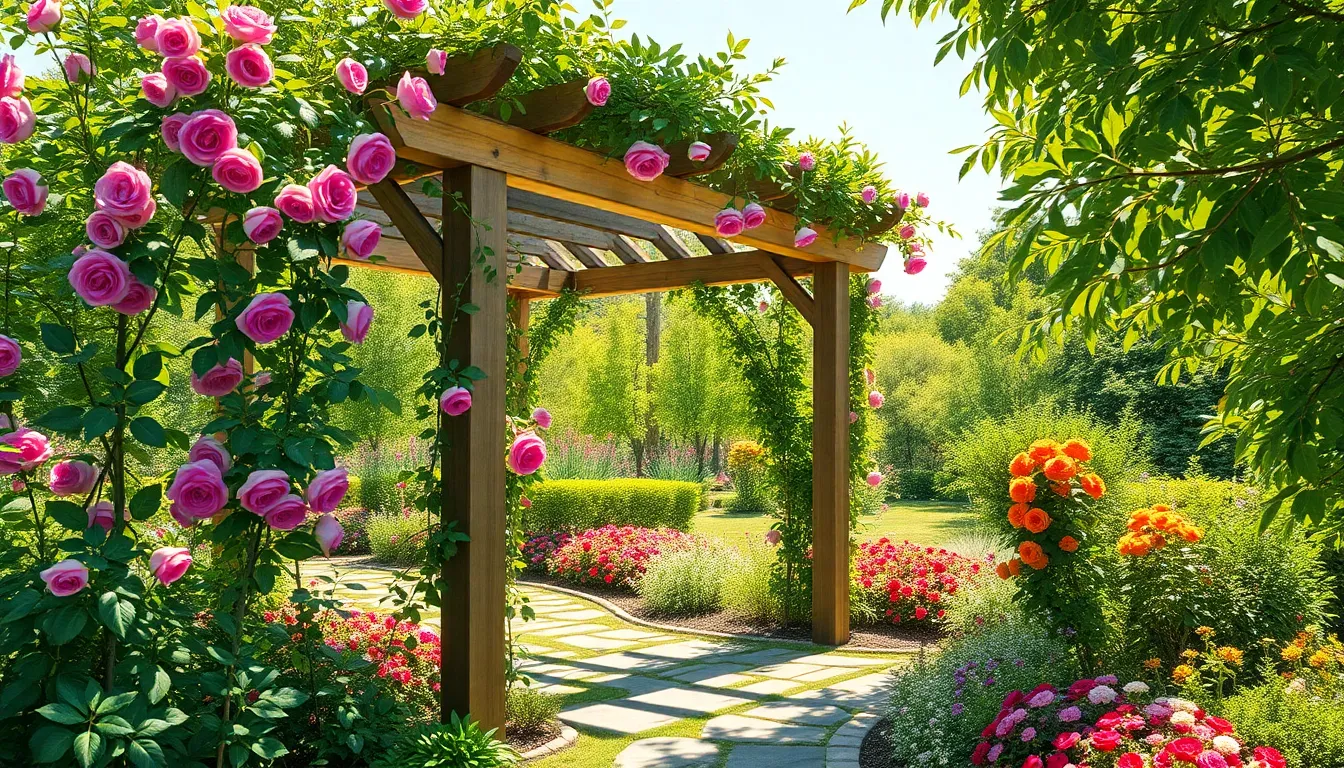
Structural elements serve as the backbone of memorable garden focal points. We’ll explore three versatile options that can transform any outdoor space into a captivating industry feature.
Construct a Beautiful Garden Arbor
Garden arbors create stunning vertical focal points that draw the eye upward while adding architectural interest to your industry. We recommend positioning these structures over pathways or in corner spaces where they can frame views and create natural transitions between garden areas.
Materials and Construction:
- Wood offers a classic, natural appearance that weathers beautifully over time
- Metal provides durability and can support heavier climbing plants like mature wisteria
- Cedar and teak resist rot naturally, making them ideal for long-term installations
Design Features:
- Incorporate climbing plants such as clematis, roses, or jasmine to soften the structure
- Add comfortable seating underneath to create an intimate retreat space
- Consider lattice panels or decorative brackets to enhance visual appeal
Install an Elegant Pergola
Pergolas function as sophisticated garden anchors that can dramatically transform your outdoor living space. We suggest designing these structures as either standalone features or extensions connected to existing architecture like your home or garden walls.
Structural Options:
- Simple beam construction works well for minimalist garden designs
- Intricate woodwork with decorative elements suits traditional or cottage-style landscapes
- Modern metal pergolas complement contemporary outdoor spaces
Plant Integration:
- Train wisteria to cascade over the beams for spectacular spring blooms
- Climbing roses create romantic, fragrant canopies during summer months
- Grape vines provide both beauty and functional fruit production
Build a Charming Garden Gazebo
Garden gazebos establish central gathering points that serve as both shelter and scenic viewpoints. We recommend choosing shapes that complement your garden’s existing geometry, whether round, square, or octagonal configurations.
Placement Strategy:
- Position gazebos to take advantage of the best garden views
- Ensure adequate clearance from trees and other structures
- Create pathways that naturally lead visitors to this focal point
- Install decorative lanterns or string lights for evening ambiance
- Include built-in seating or space for outdoor dining furniture
- Add screening or curtains for privacy and weather protection
- Consider raised platforms to improve drainage and create prominence
Incorporate Artistic Sculptures and Statuary
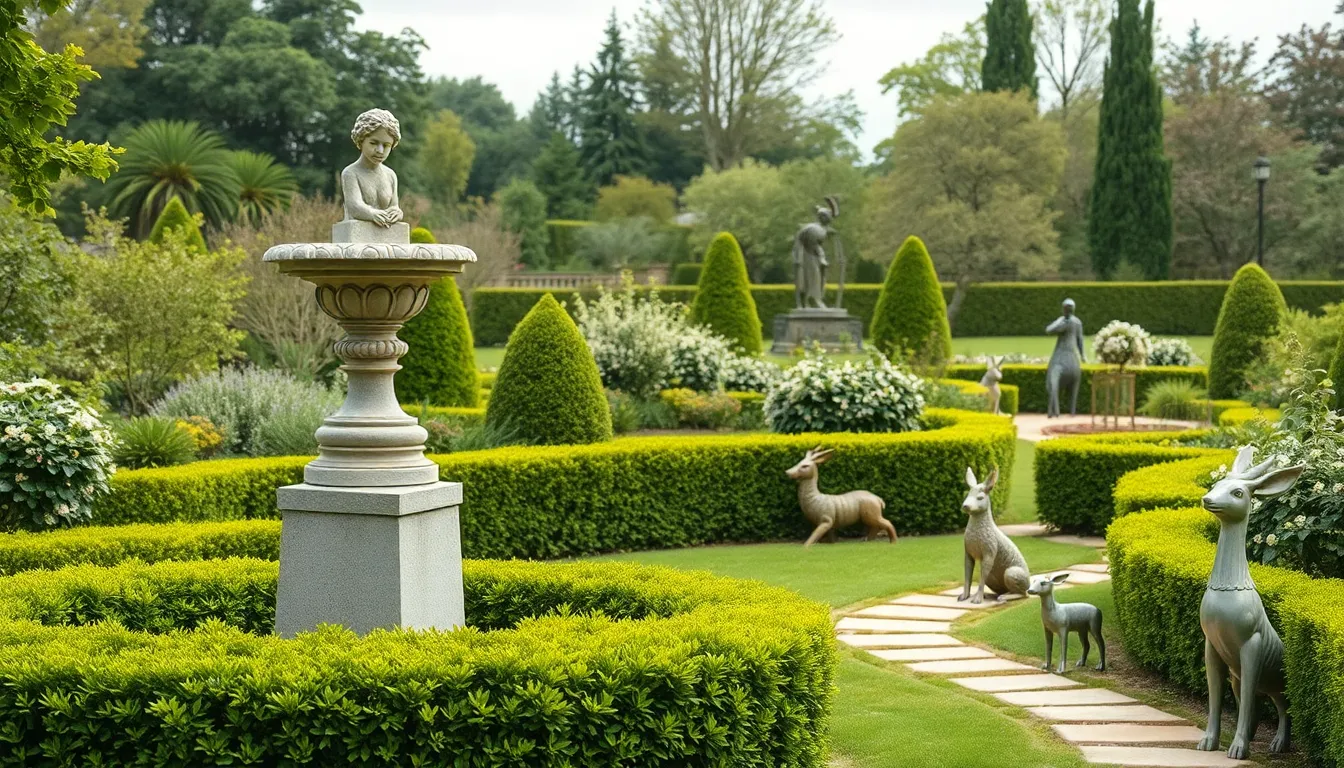
Sculptures serve as compelling visual anchors that offer a break in the greenery and provide a resting spot for the gaze amid plants. Strategic placement at pathway intersections or garden bed centers helps anchor your design and guide movement through the space.
Choose Classical Stone Garden Statues
Classical stone statues bring timeless elegance and a sense of history that enhances any garden’s sophistication. We recommend positioning these permanent pieces at the center of symmetrical beds or framing them with clipped hedges for maximum refined impact.
Natural stone materials offer lasting beauty and craftsmanship that withstand weather conditions while maintaining their appeal. Stone statues depicting human figures, mythological creatures, or traditional motifs work particularly well in formal European or Mediterranean garden themes.
Consider placement where visitors can appreciate the statue’s details from multiple viewing angles. We’ve found that classical statues create the most dramatic effect when they serve as the terminus of a garden path or vista.
Select Modern Abstract Metal Sculptures
Abstract metal sculptures provide bold forms and textures that create striking contrast with organic garden elements. These contemporary pieces introduce ever-changing plays of light and shadow throughout the day, adding visual excitement to modern garden designs.
Geometric or fluid metal shapes work exceptionally well as standalone focal points in minimalist landscapes. We suggest choosing sculptures with interesting silhouettes that remain compelling even when viewed from different angles.
Placement considerations include ensuring adequate space around the sculpture for proper appreciation and positioning where the piece won’t compete with surrounding plantings. Metal sculptures often benefit from simple backgrounds like evergreen hedges or clean hardscaping.
Install Whimsical Animal Figurines
Whimsical animal figurines inject charm and personality while lightening the garden’s mood with playful elements. These delightful pieces range from small bird statues to larger imaginative creatures that provide unexpected focal points throughout your industry.
Animal figurines work best in informal or cottage style gardens where fun and surprise elements feel natural and inviting. We recommend clustering smaller pieces or using single larger figurines as conversation starters along garden paths.
Strategic placement near seating areas or children’s play spaces enhances the interactive quality these pieces bring to outdoor spaces. Consider weather resistant materials and secure installation methods to ensure your whimsical additions remain stable and appealing season after season.
Plant a Show-Stopping Specimen Tree
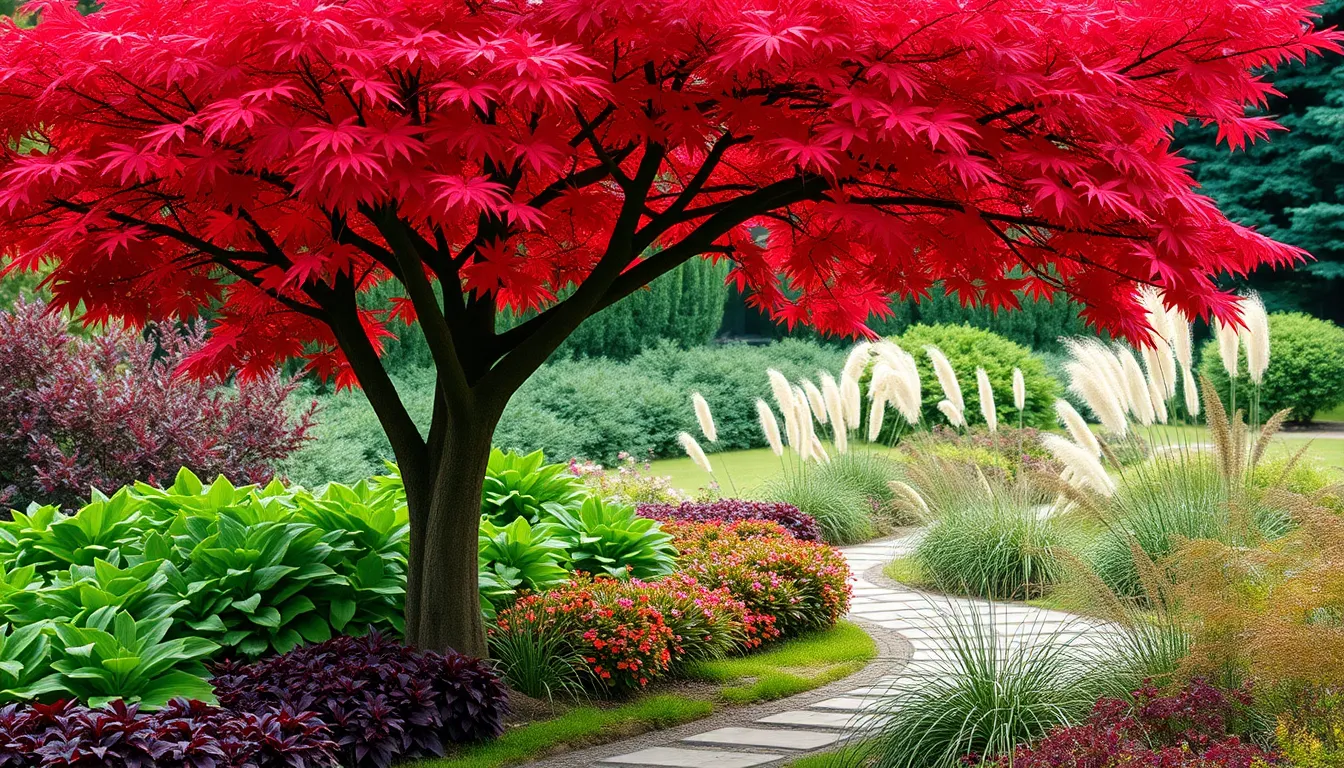
Specimen trees create natural drama that transforms any garden into a captivating outdoor sanctuary. We’ll explore three exceptional choices that serve as living sculptures while providing year-round visual interest.
Feature a Japanese Maple as Your Centerpiece
Japanese Maples deliver exquisite beauty with their delicate, colorful leaves and elegant branching patterns that make them perfect garden centerpieces. These refined trees showcase stunning red or burgundy foliage that creates instant visual impact throughout multiple seasons. Position your Japanese Maple where it can be viewed from various angles or frame it with complementary plantings to enhance its graceful presence.
Strategic placement at pathway intersections or garden bed centers allows the tree’s refined form to anchor both formal and informal garden designs effectively. Consider varieties like ‘Bloodgood’ for deep red foliage or ‘Emperor I’ for upright growth habits that suit different garden styles. Surrounding plantings of hostas, ferns, or ornamental grasses create layered textures that highlight the maple’s delicate structure.
Showcase a Flowering Magnolia Tree
Magnolia trees command attention with their large, fragrant blooms and glossy leaves that add seasonal grandeur to any garden space. These spectacular flowering trees create natural focal points through their impressive floral displays that naturally draw the eye and invite closer appreciation. Plant magnolias as standalone accents or pair them with complementary shrubs to establish lush focal areas.
Southern Magnolias provide year-round interest with evergreen foliage and creamy white blooms measuring up to 12 inches across. Star Magnolias offer earlier spring flowers and compact growth suitable for smaller gardens. Position these trees where their blooms can be appreciated from indoor windows or outdoor seating areas to maximize their seasonal impact.
Highlight an Ornamental Weeping Willow
Ornamental weeping willows create serene, romantic focal points with their cascading branches and soft, flowing silhouettes that stand out beautifully in garden landscapes. These graceful trees provide unique visual contrast with their draping form, especially when positioned near water features or open lawn spaces. Plant weeping willows where their distinctive shape can be fully appreciated and won’t be crowded by other plantings.
Dwarf weeping willows like ‘Kilmarnock’ reach only 6-8 feet tall, making them suitable for smaller gardens while maintaining the classic weeping form. Standard weeping willows create dramatic statements in larger spaces and establish peaceful gathering spots beneath their canopy. Consider placement near garden benches or pathways where visitors can experience the tree’s calming presence up close.
Establish a Dramatic Container Garden Display
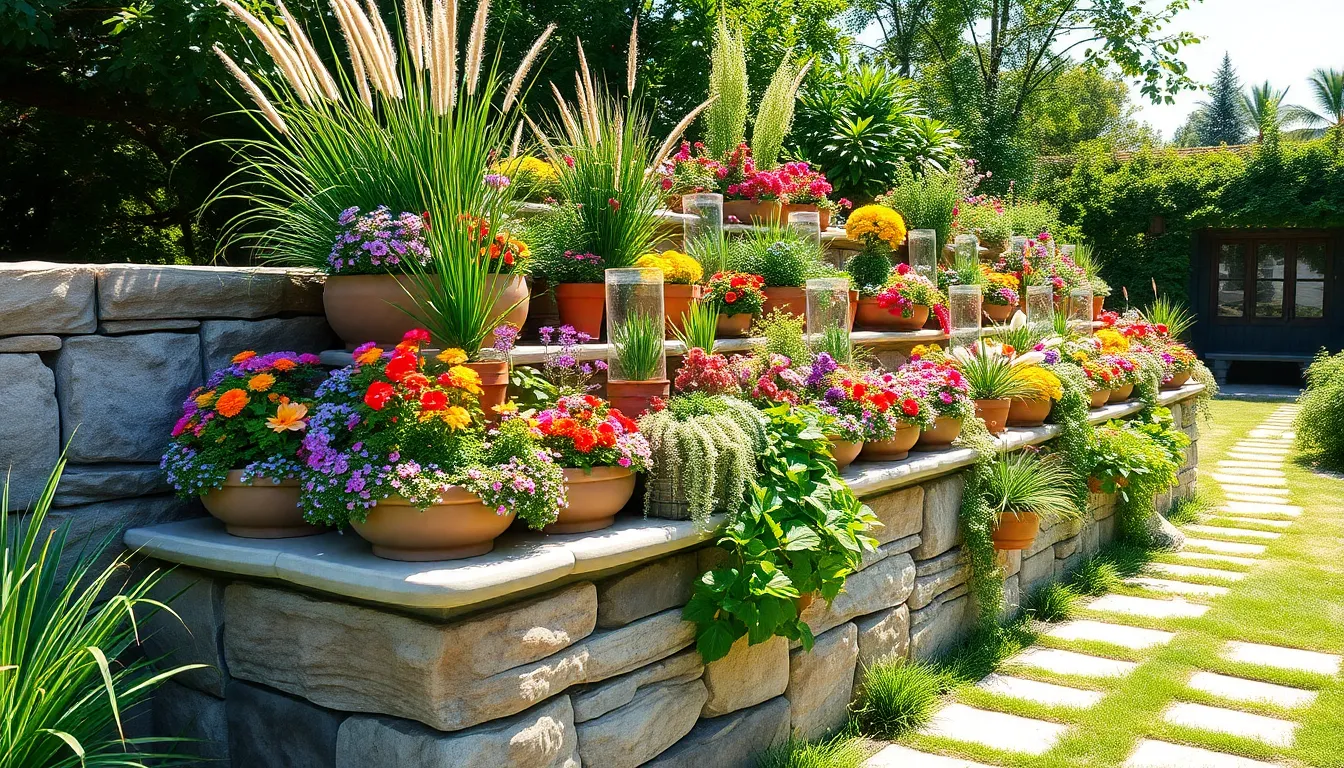
Container arrangements offer incredible flexibility for creating stunning garden focal points that can be moved and refreshed throughout the seasons. Strategic placement of decorative containers within garden beds encourages visitors to slow down and appreciate the surrounding industry.
Create Large-Scale Planter Arrangements
Grouping multiple large planters together transforms ordinary spaces into extraordinary garden showcases. We recommend positioning three to five substantial containers of varying heights to create visual depth and prevent monotony. Ornamental trees like Japanese maples or flowering dogwoods serve as anchor plants in the largest containers, while medium sized planters can house seasonal blooms such as hydrangeas or ornamental grasses.
Material selection plays a crucial role in achieving maximum impact with your planter arrangements. Stone containers provide timeless elegance and weather well in all seasons, while ceramic planters offer vibrant color options that complement your plant selections. Metal planters create striking contemporary looks, especially when filled with architectural plants like agaves or ornamental bamboo.
Strategic plant combinations within each planter elevate the entire display beyond simple container gardening. Mixing textures through combinations of broad leafed hostas with spiky ornamental grasses creates ever-changing visual interest. Bold foliage plants like coleus or caladiums provide color contrast against neutral container materials, while trailing plants such as ivy or sweet potato vine soften harsh edges.
Design Tiered Container Gardens
Tiered arrangements using containers of different sizes create impressive vertical displays that draw the eye upward. We suggest using the tallest container as your back anchor, positioning medium height planters in the middle, and placing smaller containers at the front. This arrangement technique works particularly well at pathway intersections where visitors naturally pause to take in the view.
Plant selection for tiered displays should emphasize varying heights and textures to maximize the dimensional effect. Tall specimens like ornamental fountaingrass or upright junipers work best in rear containers, while mounding plants such as coral bells or heuchera fill middle tier spaces effectively. Cascading plants like petunias or bacopa spill beautifully from front containers, creating seamless transitions between levels.
Color coordination across all tiers ensures your tiered container garden reads as one cohesive focal point rather than separate elements. Repeating one or two accent colors throughout all containers creates harmony, while varying the intensity keeps the display interesting. Foliage plants with burgundy or chartreuse leaves provide consistent color threads that tie disparate flowering plants together beautifully.
Build Elevated Raised Bed Features
Elevated planters positioned at garden corners or along pathways create prominent focal points that guide visitors through your outdoor space. We recommend constructing raised beds between 18 to 24 inches high for optimal visual impact without overwhelming nearby plantings. These elevated features work especially well when filled with vibrant flowers or aromatic herbs that visitors can easily see and smell.
Construction materials for elevated beds should complement your existing garden architecture while providing long term durability. Natural stone creates seamless integration with traditional garden styles, while modern concrete blocks offer clean lines for contemporary designs. Cedar or composite lumber provides warm, organic appeal that works well in casual garden settings.
Plant choices for elevated beds should emphasize species that benefit from improved drainage and closer viewing. Herb gardens featuring rosemary, lavender, and thyme thrive in raised conditions while providing fragrance and culinary value. Succulent displays create striking geometric patterns that look particularly impressive when viewed from above, while seasonal flower rotations ensure year round color and interest.
Install Striking Garden Lighting Elements
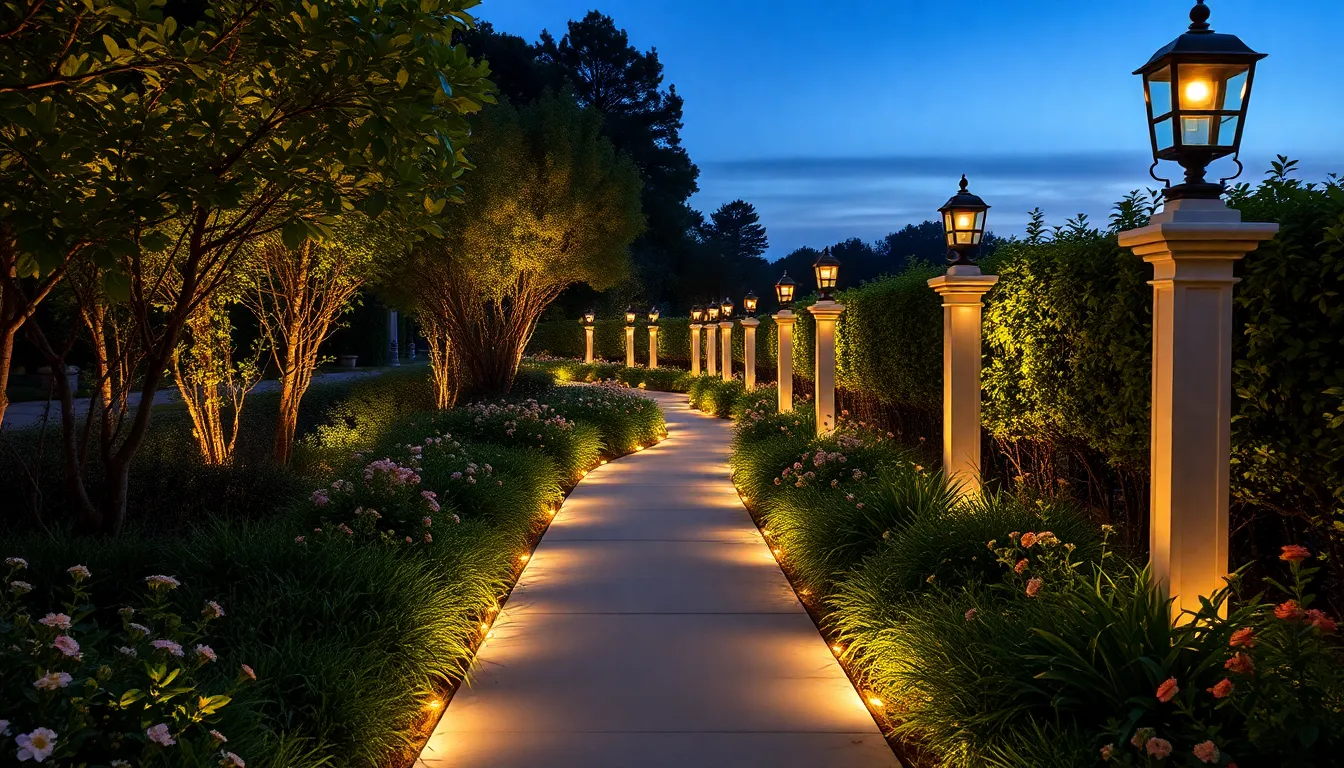
Transform your garden focal points into mesmerizing nighttime displays with strategic lighting that extends your outdoor enjoyment well beyond sunset. Proper illumination doesn’t just enhance visibility—it creates drama, depth, and magical ambiance that makes your garden irresistible after dark.
Add Dramatic Uplighting for Trees
Spotlights positioned at the base of majestic trees create breathtaking silhouettes that transform your specimen plantings into living sculptures. We recommend using LED fixtures with 3000K warm white temperatures to highlight the natural textures of bark and branches without creating harsh shadows. Position lights 6-8 feet away from the trunk at a 30-degree angle to achieve optimal coverage without causing light pollution.
Consider installing multiple fixtures around larger trees like weeping willows or flowering magnolias to eliminate dark spots and create even illumination. Adjustable beam angles allow you to customize the light spread based on your tree’s canopy size and shape. Timer controls ensure your dramatic uplighting automatically activates at dusk, creating a consistent focal point that draws attention throughout the evening hours.
Install Decorative Lantern Posts
Lantern posts serve dual purposes by providing essential pathway illumination while adding architectural interest that complements your garden’s overall design theme. We suggest choosing fixtures that match your home’s exterior style—whether traditional black iron, contemporary stainless steel, or rustic copper finishes. Install posts at 8-10 foot intervals along main walkways to ensure adequate lighting coverage without overwhelming the space.
Solar powered lantern posts offer energy efficient answers that require minimal installation effort while providing reliable illumination throughout the night. Position these fixtures near key focal points like garden arbors, sculptural elements, or seating areas to create visual anchors that guide visitors through your outdoor space. Weather resistant materials ensure your investment withstands seasonal changes while maintaining consistent performance year after year.
Create Ambient Pathway Lighting
Soft ground level illumination transforms ordinary walkways into inviting passages that encourage exploration while ensuring safe navigation after dark. We recommend installing low voltage LED strip lights along pathway edges or embedding small fixtures directly into hardscape materials for seamless integration. Warm 2700K color temperatures create welcoming atmospheres that complement natural garden elements without competing with plant materials.
Step lights integrated into retaining walls or raised bed edges provide subtle illumination that highlights changes in elevation while maintaining the garden’s natural flow. Motion sensor capabilities offer energy savings and added security while ensuring pathways remain well lit when needed. Consider adding dimmer controls to adjust brightness levels based on different occasions—from intimate evening strolls to larger outdoor gatherings.
Build a Functional Garden Room or Seating Area
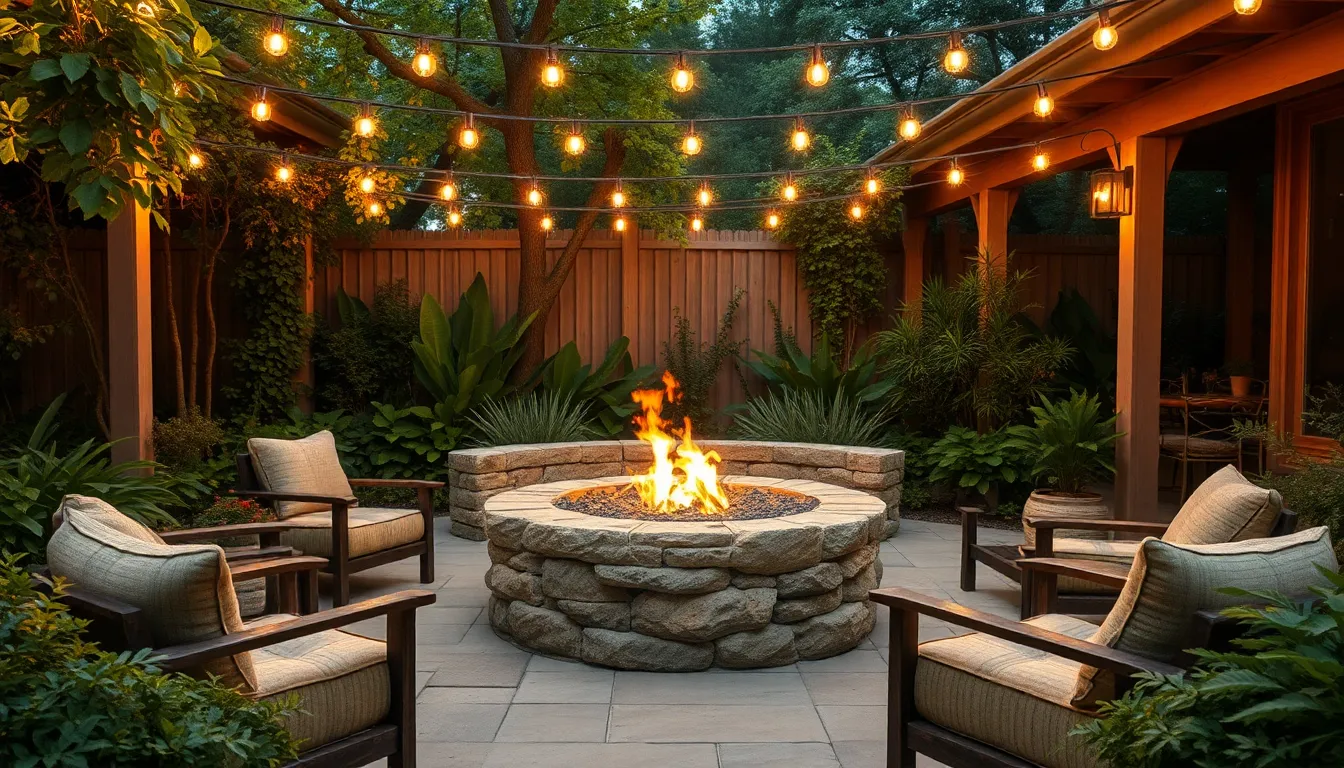
Functional outdoor living spaces transform gardens into versatile environments where we can relax, entertain, and connect with nature year-round. These carefully designed areas serve as intimate focal points that draw people in while providing practical purposes beyond visual appeal.
Design a Cozy Fire Pit Circle
Creating a fire pit circle establishes an inviting gathering spot that becomes the heart of evening entertainment. Stone and wood materials work beautifully together to achieve a rustic aesthetic that blends naturally with garden surroundings. Arranging comfortable seating options like cushioned chairs or sturdy benches around the fire pit ensures everyone can enjoy the warmth and ambiance.
Strategic placement matters significantly when positioning your fire pit circle. Locate it at least 10 feet away from structures, overhanging branches, and flammable materials for safety. Lanterns and string lights enhance the evening atmosphere while providing gentle illumination for pathways leading to and from the seating area.
Natural stone borders or decorative gravel rings help define the space while preventing grass and weeds from encroaching. Built-in storage benches offer dual functionality by housing firewood, outdoor cushions, or entertaining supplies while providing additional seating when needed.
Create an Outdoor Dining Space
Weather-resistant furniture forms the foundation of any successful outdoor dining area that withstands seasonal changes. Teak, aluminum, and powder-coated steel tables and chairs offer durability without sacrificing style or comfort. Outdoor candles and battery-powered lanterns create intimate lighting that transforms casual meals into memorable dining experiences.
Privacy screens made from tall plants, decorative panels, or strategically placed trellises help create an enclosed feeling that makes dining more enjoyable. Climbing vines like jasmine or clematis on these structures add natural beauty while providing seasonal interest and fragrance.
Overhead protection enhances comfort during various weather conditions. Market umbrellas, sail shades, or pergolas with retractable canopies offer flexibility while defining the dining space boundaries. Built-in planters around the dining area incorporate herbs and edible flowers that can be harvested for cooking and garnishing meals.
Install a Meditation Garden Retreat
Meditation spaces require thoughtful color palettes that promote tranquility and mental clarity. Soothing blues, soft greens, and neutral earth tones in both plantings and hardscape materials create the calming environment essential for reflection and mindfulness practices.
Water features like small fountains or bubbling stones add gentle sounds that mask distracting noises while promoting relaxation. Position these elements where their sounds can be heard throughout the meditation area without becoming overwhelming or intrusive.
Winding pathways leading to the retreat create anticipation and help transition visitors from everyday concerns to peaceful contemplation. Natural materials like flagstone, river rocks, or wooden stepping stones work exceptionally well for these access routes. Aromatic plants such as lavender, rosemary, and mint along the pathway engage the senses and enhance the meditative experience through their natural fragrances.
Develop a Themed Garden Collection
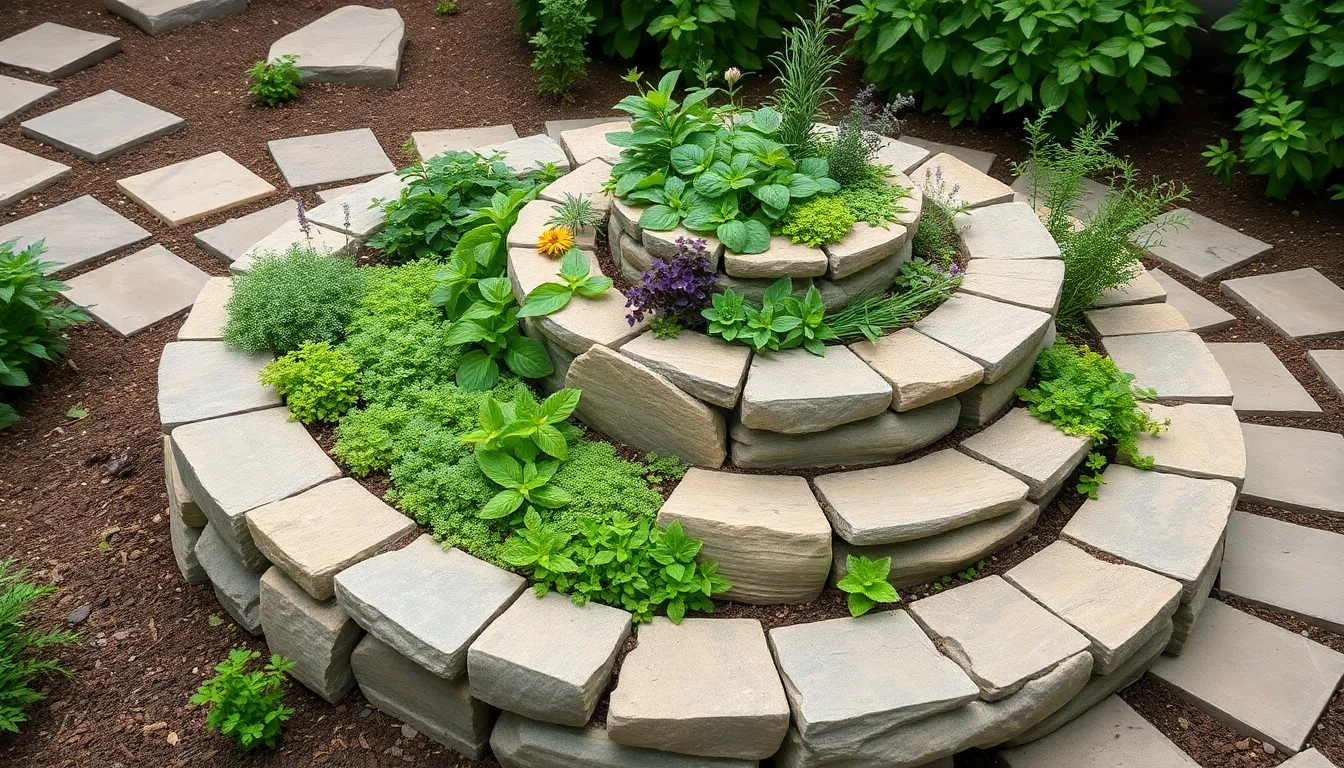
Creating a cohesive themed garden collection transforms your outdoor space into a captivating focal point that tells a unified story. We’ll explore three distinctive approaches that combine visual appeal with purposeful design elements.
Plant a Fragrant Herb Garden Spiral
Fragrant herb garden spirals create stunning vertical focal points that engage multiple senses simultaneously. We recommend constructing your spiral using natural stone or brick to form a raised structure that typically measures 6-8 feet in diameter and 3-4 feet at its highest point.
Start with Mediterranean herbs like rosemary and thyme at the top where drainage is optimal. Plant basil and oregano in the middle sections where moisture levels remain consistent. Position mint and parsley at the base where they’ll receive adequate water without becoming waterlogged.
The spiral design naturally creates microclimates that accommodate different herb requirements. We suggest incorporating stepping stones or small pathways that allow easy harvesting access. This functional focal point delivers both aromatic appeal and culinary benefits throughout the growing season.
Create a Colorful Butterfly Garden
Butterfly gardens serve as ever-changing focal points that bring constant movement and vibrant colors to your industry. We focus on selecting nectar-rich flowers that bloom in succession from spring through fall to maintain continuous butterfly activity.
Plant purple coneflowers and black-eyed Susans as your foundation plants since they attract multiple butterfly species. Add lantana and pentas for summer-long blooms that butterflies find irresistible. Include native milkweed varieties to support monarch butterfly populations specifically.
Group plants in clusters of 3-5 of the same species to create the visual impact butterflies prefer. We recommend positioning your butterfly garden in a sunny location protected from strong winds. Include shallow water sources like puddling stations to complete the habitat and increase butterfly visits.
Design a Zen Rock Garden Display
Zen rock gardens offer serene focal points that create contemplative spaces within your industry. We design these minimalist displays using carefully selected stones, graded gravel, and strategic plant placement to achieve visual balance.
Choose three to five rocks of varying sizes as your primary elements, positioning the largest stone slightly off-center to create natural asymmetry. Rake fine gravel or sand in flowing patterns around the rocks to represent water movement. Plant ornamental grasses like mondo grass or small bamboo varieties sparingly to maintain the garden’s peaceful simplicity.
We suggest incorporating a single specimen plant like a Japanese maple or carefully pruned pine to add vertical interest without overwhelming the design. Position your zen garden where it can be viewed from indoor living spaces to maximize its calming influence throughout the day.
Conclusion
We’ve shared countless ways to transform your outdoor space into something truly special. Whether you’re drawn to the gentle sound of water features or the dramatic impact of specimen trees each focal point offers its own unique charm.
The beauty lies in mixing and matching these elements to reflect your personal style. You might combine a Japanese maple with strategically placed uplighting or create a cozy fire pit area surrounded by fragrant herbs.
Remember that great garden design doesn’t happen overnight. Start with one focal point that speaks to you and build from there. Your garden will evolve into a space that not only looks stunning but also tells your story through every carefully chosen element.
Frequently Asked Questions
What are the best water features for creating a garden focal point?
Classic garden fountains, modern reflecting pools, and natural stone waterfalls are excellent choices. Stone and ceramic fountains offer durability, while solar-powered options provide eco-friendly operation. Reflecting pools with integrated lighting create dramatic effects, and natural stone waterfalls blend seamlessly with garden settings when properly constructed with complementary plantings.
How do I choose the right garden structure for my space?
Consider your garden’s size and style. Garden arbors work well for creating vertical interest and framing views. Pergolas serve as sophisticated anchors for larger spaces and can support climbing plants. Gazebos function as central gathering points and work best when positioned strategically as destination features in your garden layout.
What types of sculptures work best as garden focal points?
Classical stone statues provide timeless elegance for formal gardens, while modern abstract metal sculptures offer bold contrasts in contemporary designs. Whimsical animal figurines add playful charm and personality. Choose materials and styles that complement your garden’s overall aesthetic, and place them strategically to guide movement through the space.
Which specimen trees make the best garden centerpieces?
Japanese Maples offer stunning colorful foliage and work well as living sculptures. Flowering Magnolias provide seasonal grandeur with large, fragrant blooms. Ornamental Weeping Willows create serene, romantic focal points with cascading branches. Consider mature size, seasonal interest, and placement when selecting your specimen tree.
How can container gardening create effective focal points?
Group large planters of varying heights to enhance visual depth using materials like stone, ceramic, or metal. Create tiered container gardens that draw the eye upward with coordinated colors and plant selections. Elevated raised bed features can guide visitors through the garden while providing prominent focal points.
What lighting techniques enhance garden focal points?
Use dramatic uplighting with LED fixtures to create breathtaking tree silhouettes. Install decorative lantern posts for pathway illumination and architectural interest. Add ambient pathway lighting to transform walkways into inviting passages. Thoughtful lighting design creates magical ambiance while ensuring safety and extending outdoor enjoyment.
How do I create functional outdoor living spaces as focal points?
Design cozy fire pit circles using stone and wood with appropriate seating arrangements for safety and comfort. Create outdoor dining areas with weather-resistant furniture, privacy screens, and overhead protection. Consider meditation garden retreats with soothing color palettes, water features, and aromatic plants for tranquil reflection spaces.
What are some effective themed garden collections?
Plant fragrant herb garden spirals for vertical appeal and microclimates. Create colorful butterfly gardens with nectar-rich flowers that attract butterflies throughout seasons. Design Zen rock garden displays with carefully selected stones and minimal plantings for tranquil, minimalist appeal. Choose themes that reflect your personal interests and garden style.
